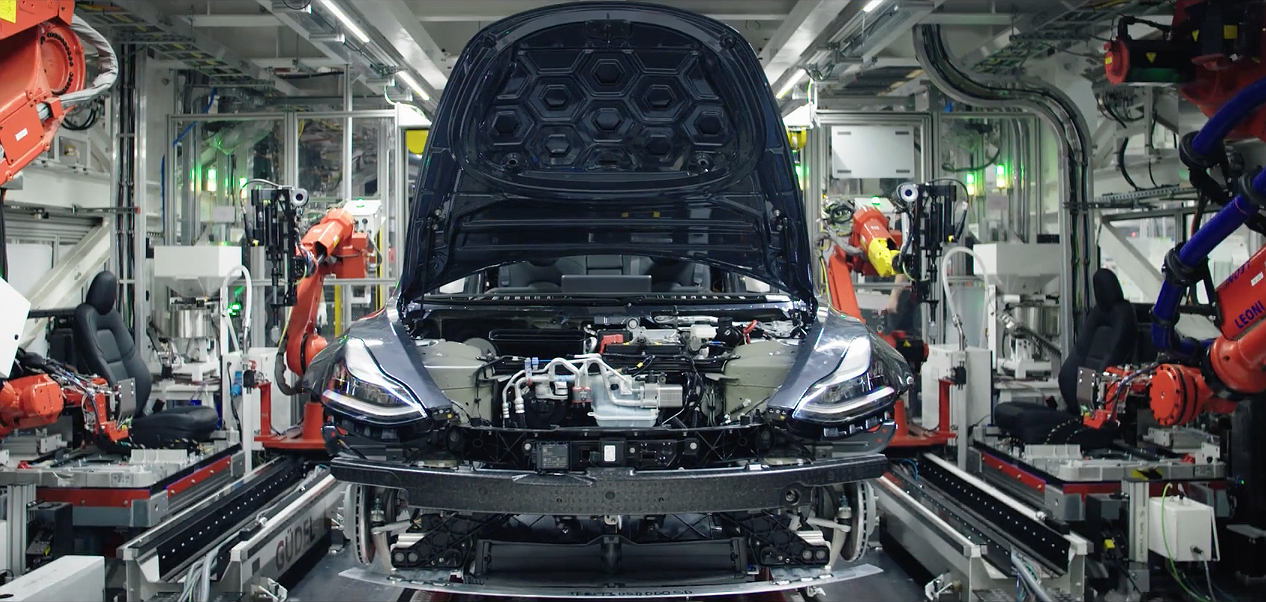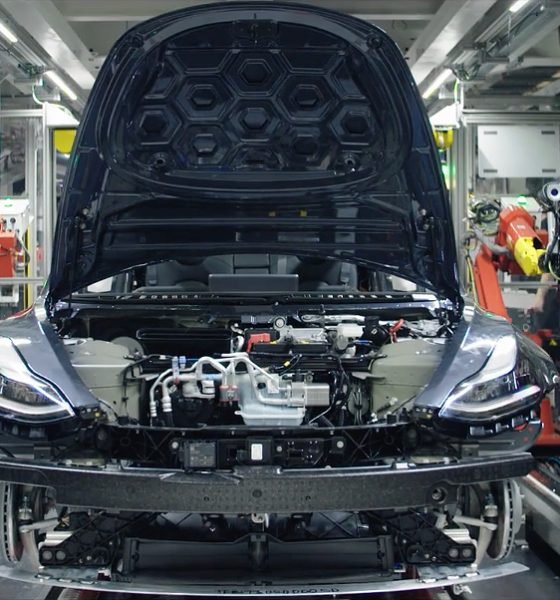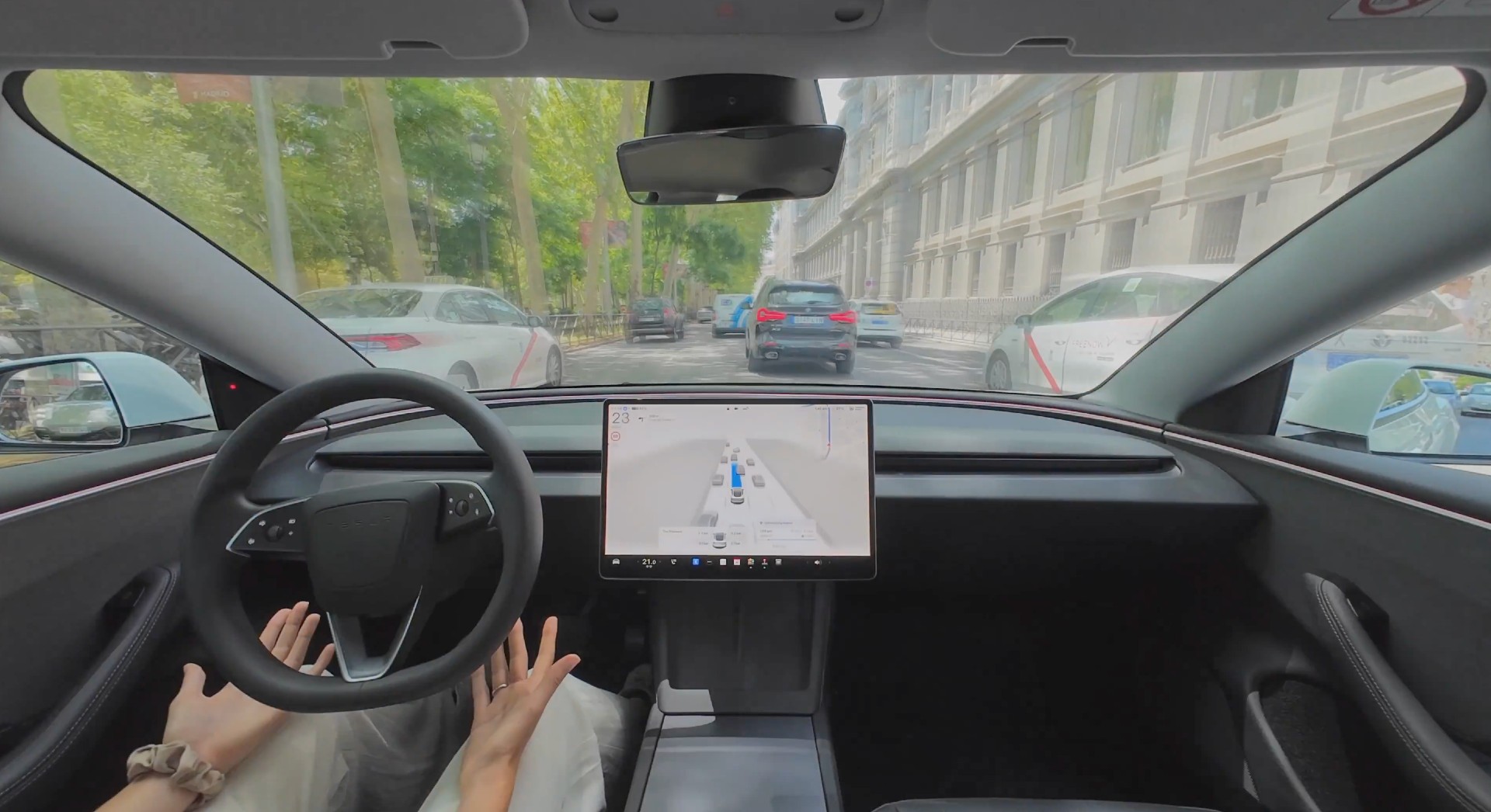

Investor's Corner
Tesla’s strong overseas Model 3 push teased with 9k VIN registrations for Europe
Tesla has reached a point where it is capable of producing the Model 3 en masse. With the vehicle now saturating North America, the time has come to bring the electric sedan to the international market. In this light, Tesla appears set to kick off 2019 on a strong note, starting the first week of the year with more than 14,000 Model 3 VIN registrations — over 9,000 of which are cars for the European market.
As could be seen in the data aggregated by Model 3 VIN tracking group @Model3VINs, Tesla had started 2019 with a string of more than 14,000 filings. Among these, more than 9,600 were listed with restraint systems which indicated that the cars were configured for Europe. With these latest filings, Tesla had also broken the 200k barrier with its Model 3 VIN registrations — a notable milestone for a vehicle whose production was beset by challenges on its first year.

The company’s Model 3 VIN registrations for Europe bodes well for the Tesla’s expansion into the region. The electric car maker, after all, is reportedly still looking to receive “homologation” approval to sell cars in Europe. In a statement to the Los Angeles Times, though, Tesla noted that it was working closely with regulators and that it expects to gain approval for the Model 3 after the 2018 holidays.
If Tesla receives homologation approval soon, the company would be able to follow through with its plan of shipping 3,000 Model 3 to the region per week starting in February. This would give the Model 3 time to saturate the European market before other premium EVs saturate the market, one of which is the Audi e-tron, an all-electric SUV unveiled last year. The e-tron’s European release initially got delayed due to issues with its software, though a later statement by the legacy automaker on December to EV publication Electrive noted that the e-tron had made it through homologation.
Tesla, for its part, is moving full throttle towards the Model 3’s European push. Belgian news agency Focus-WTV, for one, has noted that the electric sedans will be arriving every week at the port of Zeebrugge, which is located on the coast of Belgium. To optimize the shipping of the Model 3 further, Tesla is also reportedly partnering with transportation firm International Car Operators (ICO), which utilizes RoRo (roll-on, roll-off) ships that are capable of loading and unloading cargo quickly.
To support the influx of the Model 3 in Europe, Tesla is also hard at work rolling out Superchargers that are equipped with dual charge cables. These stations, which are fitted with both a Type 2 plug and a CCS plug, would be perfectly compatible with the Model 3 for the region, which would are with a CCS port. Tesla plans to retrofit its existing Supercharger Network in Europe to accommodate the Model 3 as well.
The Tesla Model 3 is a vehicle described by Elon Musk as a “bet-the-company” project, a car that pretty much determined the future of the company. Despite initial production challenges, the Model 3 has been proving itself in the US market, ranking among the best-selling cars in the country over the past few months despite the country’s notable preference for vehicles like SUVs and trucks. In foreign regions, the Model 3 actually could have more potential. Tesla, after all, noted in its Q3 2018 Update Letter that the mid-sized premium sedan market in Europe is “more than twice as big as the same segment in the US.”

Investor's Corner
Tesla price target boost from its biggest bear is 95% below its current level

Tesla stock (NASDAQ: TSLA) just got a price target boost from its biggest bear, Gordon Johnson of GLJ Research, who raised his expected trading level to one that is 95 percent lower than its current trading level.
Johnson pushed his Tesla price target from $19.05 to $25.28 on Wednesday, while maintaining the ‘Sell’ rating that has been present on the stock for a long time. GLJ has largely been recognized as the biggest skeptic of Elon Musk’s company, being particularly critical of the automotive side of things.
Tesla has routinely been called out by Johnson for negative delivery growth, what he calls “weakening demand,” and price cuts that have occurred in past years, all pointing to them as desperate measures to sell its cars.
Johnson has also said that Tesla is extremely overvalued and is too reliant on regulatory credits for profitability. Other analysts on the bullish side recognize Tesla as a company that is bigger than just its automotive side.
Many believe it is a leader in autonomous driving, like Dan Ives of Wedbush, who believes Tesla will have a widely successful 2026, especially if it can come through on its targets and schedules for Robotaxi and Cybercab.
Justifying the price target this week, Johnson said that the revised valuation is based on “reality rather than narrative.” Tesla has been noted by other analysts and financial experts as a stock that trades on narrative, something Johnson obviously disagrees with.
Dan Nathan, a notorious skeptic of the stock, turned bullish late last year, recognizing the company’s shares trade on “technicals and sentiment.” He said, “From a trading perspective, it looks very interesting.”
Tesla bear turns bullish for two reasons as stock continues boost
Johnson has remained very consistent with this sentiment regarding Tesla and his beliefs regarding its true valuation, and has never shied away from putting his true thoughts out there.
Tesla shares closed at $431.40 today, about 95 percent above where Johnson’s new price target lies.
Investor's Corner
Tesla gets price target bump, citing growing lead in self-driving

Tesla (NASDAQ: TSLA) stock received a price target update from Pierre Ferragu of Wall Street firm New Street Research, citing the company’s growing lead in self-driving and autonomy.
On Tuesday, Ferragu bumped his price target from $520 to $600, stating that the consensus from the Consumer Electronics Show in Las Vegas was that Tesla’s lead in autonomy has been sustained, is growing, and sits at a multiple-year lead over its competitors.
CES 2026 validates Tesla’s FSD strategy, but there’s a big lag for rivals: analyst
“The signal from Vegas is loud and clear,” the analyst writes. “The industry isn’t catching up to Tesla; it is actively validating Tesla’s strategy…just with a 12-year lag.”
The note shows that the company’s prowess in vehicle autonomy is being solidified by lagging competitors that claim to have the best method. The only problem is that Tesla’s Vision-based approach, which it adopted back in 2022 with the Model 3 and Model Y initially, has been proven to be more effective than competitors’ approach, which utilizes other technology, such as LiDAR and sensors.
Currently, Tesla shares are sitting at around $433, as the company’s stock price closed at $432.96 on Tuesday afternoon.
Ferragu’s consensus on Tesla shares echoes that of other Wall Street analysts who are bullish on the company’s stock and position within the AI, autonomy, and robotics sector.
Dan Ives of Wedbush wrote in a note in mid-December that he anticipates Tesla having a massive 2026, and could reach a $3 trillion valuation this year, especially with the “AI chapter” taking hold of the narrative at the company.
Ives also said that the big step in the right direction for Tesla will be initiating production of the Cybercab, as well as expanding on the Robotaxi program through the next 12 months:
“…as full-scale volume production begins with the autonomous and robotics roadmap…The company has started to test the all-important Cybercab in Austin over the past few weeks, which is an incremental step towards launching in 2026 with important volume production of Cybercabs starting in April/May, which remains the golden goose in unlocking TSLA’s AI valuation.”
Tesla analyst breaks down delivery report: ‘A step in the right direction’
Tesla has transitioned from an automaker to a full-fledged AI company, and its Robotaxi and Cybercab programs, fueled by the Full Self-Driving suite, are leading the charge moving forward. In 2026, there are major goals the company has outlined. The first is removing Safety Drivers from vehicles in Austin, Texas, one of the areas where it operates a ride-hailing service within the U.S.
Ultimately, Tesla will aim to launch a Level 5 autonomy suite to the public in the coming years.
Investor's Corner
Tesla Q4 delivery numbers are better than they initially look: analyst
The Deepwater Asset Management Managing Partner shared his thoughts in a post on his website.

Longtime Tesla analyst and Deepwater Asset Management Managing Partner Gene Munster has shared his insights on Tesla’s Q4 2025 deliveries. As per the analyst, Tesla’s numbers are actually better than they first appear.
Munster shared his thoughts in a post on his website.
Normalized December Deliveries
Munster noted that Tesla delivered 418k vehicles in the fourth quarter of 2025, slightly below Street expectations of 420k but above the whisper number of 415k. Tesla’s reported 16% year-over-year decline, compared to +7% in September, is largely distorted by the timing of the tax credit expiration, which pulled forward demand.
“Taking a step back, we believe September deliveries pulled forward approximately 55k units that would have otherwise occurred in December or March. For simplicity, we assume the entire pull-forward impacted the December quarter. Under this assumption, September growth would have been down ~5% absent the 55k pull-forward, a Deepwater estimate tied to the credit’s expiration.
“For December deliveries to have declined ~5% year over year would imply total deliveries of roughly 470k. Subtracting the 55k units pulled into September results in an implied December delivery figure of approximately 415k. The reported 418k suggests that, when normalizing for the tax credit timing, quarter-over-quarter growth has been consistently down ~5%. Importantly, this ~5% decline represents an improvement from the ~13% declines seen in both the March and June 2025 quarters.“
Tesla’s United States market share
Munster also estimated that Q4 as a whole might very well show a notable improvement in Tesla’s market share in the United States.
“Over the past couple of years, based on data from Cox Automotive, Tesla has been losing U.S. EV market share, declining to just under 50%. Based on data for October and November, Cox estimates that total U.S. EV sales were down approximately 35%, compared to Tesla’s just reported down 16% for the full quarter. For the first two months of the quarter, Cox reported Tesla market share of roughly a 65% share, up from under 50% in the September quarter.
“While this data excludes December, the quarter as a whole is likely to show a material improvement in Tesla’s U.S. EV market share.“








